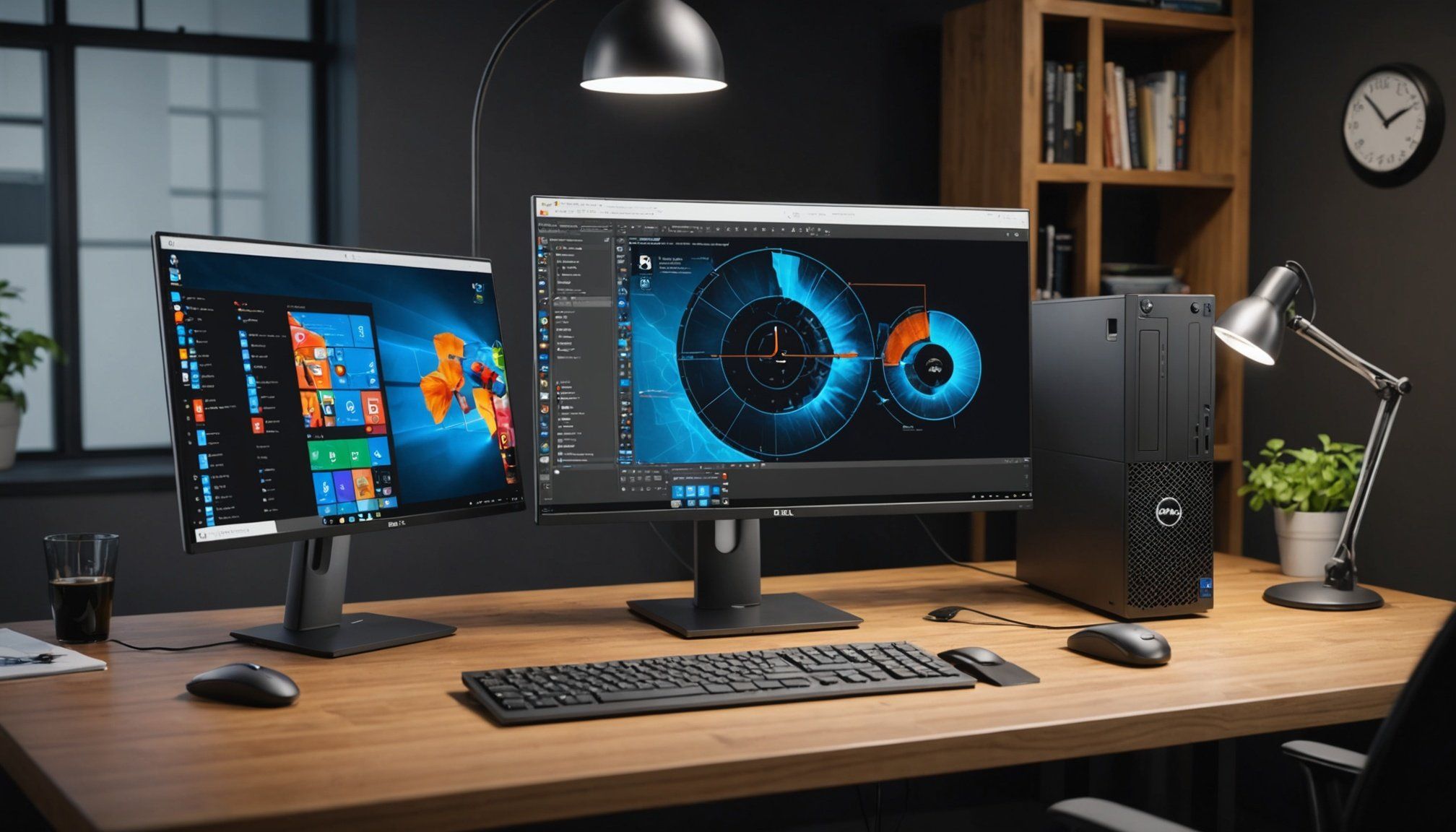Overview of Dell Precision 5540 Capabilities
The Dell Precision 5540 is a powerhouse laptop often praised for its impressive blend of performance capabilities, making it particularly well-suited for demanding 3D rendering specifications tasks. Its specifications directly influence Blender compatibility, enabling seamless handling of complex projects. Under the hood, this device is equipped with high-performance processors and ample RAM options, ideal for professional applications requiring substantial computational power.
The laptop’s compatibility with rendering software is pivotal for digital artists and professionals who rely on visual content creation. Supporting advanced hardware acceleration, it optimizes render time and quality, essential for tasks in Blender and similar software. The available GPUs ensure that not only are visual outputs rich and detailed, but they are also processed efficiently.
Also to discover : Unlocking Virtualization Excellence: Configuring a Dedicated HP ProLiant DL380 Gen10 Environment to Enhance Multi-Application Performance
One cannot overlook the importance of optimization when using the Dell Precision 5540 for professional endeavors. Proper configuration and upkeep are crucial in maximizing the machine’s potential. Adapting performance settings to align with project requirements can significantly enhance workflow. Precision and care during setup bolster the device’s capacity to handle intricate rendering tasks with ease, providing users with a robust tool for creative exploration and production success.
Hardware Upgrades for Enhanced Performance
Enhancing the hardware components of your Dell Precision 5540 can significantly boost its performance, particularly for demanding applications like Blender. Understanding these upgrades will help you maximize the laptop’s potential.
Additional reading : Essential Tips for Protecting Your Data During File Transfers with Western Digital My Passport SSD
Increasing RAM
Incorporating additional RAM is vital for seamless Blender projects. Ideally, a minimum of 32 GB is recommended, providing ample memory for complex scenes and multitasking. RAM speed and frequency are also crucial: higher values enable quick data processing, enhancing overall efficiency. When upgrading, ensure compatibility with existing hardware, focusing on the laptop’s specifications.
Upgrading the GPU
The GPU plays a pivotal role in rendering speeds for Blender tasks. A dedicated GPU such as NVIDIA’s GTX or RTX series is recommended due to its superior processing power compared to integrated graphics. This upgrade will drastically reduce render times and support high-resolution outputs, making it an essential consideration for users requiring optimal performance.
Storage Solutions
Switching to SSDs (Solid State Drives) offers faster data access, reducing load times significantly compared to traditional HDDs. For larger Blender projects, consider RAID configurations for improved performance and reliability. External storage solutions also provide an effective way to manage and store large files without burdening internal storage capacities.
Software Configurations for Blender
Configuring Blender’s software settings enhances its performance on the Dell Precision 5540. A key starting point is selecting the right render engine. Opt for Cycles for realistic results, or choose Eevee for faster, real-time rendering. This decision hinges on the project requirements and available hardware upgrades.
Next, adjust tile sizes in the render settings. Smaller tiles work well with CPUs, while larger ones are suited for GPUs. This change can substantially reduce rendering times, boosting the overall speed, particularly with a RAM and GPU boost. Utilize viewport display settings to avoid unnecessary strain. Lowering the viewport resolution or toggling off high-demand features keeps the process fluid, maintaining the system’s responsiveness during intricate tasks.
Keeping drivers updated is crucial. Use tools like NVIDIA GeForce Experience or AMD Radeon Software to manage and update GPU drivers. Outdated drivers can lead to performance bottlenecks, so regular updates ensure optimal performance. Additionally, carefully choose Blender add-ons, focusing on the most beneficial ones to avoid excessive strain. Regular management prevents potential pitfalls that can hinder Blender compatibility and overall efficiency.
Rendering Techniques and Best Practices
To enhance workflow productivity, adopt efficient workflow strategies. Start by organising scenes to minimise complexity, reducing the load on the Dell Precision 5540. Breaking down complex scenes into manageable layers can streamline the rendering process, making multitasking more fluid. Additionally, deploy proxies when working with detailed models; these lighter versions of objects speed up navigation without compromising output quality.
Batch rendering is an indispensable technique for optimising time usage. By rendering multiple tasks simultaneously, you can significantly reduce idle times. This method is especially beneficial when handling large projects, allowing for continuous progress even outside regular working hours.
Utilizing Render Farms
Online render farms provide substantial performance gains for Blender users. Connecting Blender to these farms can offload resource-heavy tasks, freeing up local computing power for other applications. This process involves configuring Blender to export projects and upload them to a farm service. Though cost considerations vary, frequently, the time saved justifies the expense, offering an efficient alternative for high-demand tasks.
Monitoring and Troubleshooting
Employ tools like system monitors to track performance during rendering. Common troubleshooting involves checking CPU and GPU temperatures to prevent overheating. Regularly updating hardware drivers ensures the system remains stable during intensive tasks, avoiding unnecessary interruptions.
Maintenance Practices for Sustained Performance
Maintaining your Dell Precision 5540 ensures it remains a high-performance machine, ready for 3D rendering and other demanding tasks. Regular maintenance of both hardware and software components is vital in sustaining its performance longevity.
Hardware Maintenance
Regularly cleaning hardware components prevents dust buildup, which can lead to overheating and performance degradation. Focus on the cooling system, ensuring fans and vents are free of obstructions. This not only prolongs the laptop’s life but ensures consistent performance during intensive tasks.
Software Maintenance
Performing regular software maintenance enhances system functionality. Keep your operating system and applications up to date to avoid bugs and performance hiccups. Regularly scanning the system for viruses and malware is crucial as these can severely impact processing power and rendering tasks.
System Backups and File Management
The importance of system backups cannot be overstated. Regular backups safeguard against data loss and ensure project continuity. Utilize external drives or cloud services for secure, accessible storage. Efficient file management streamlines workflows, freeing up system resources needed for optimal functionality.











